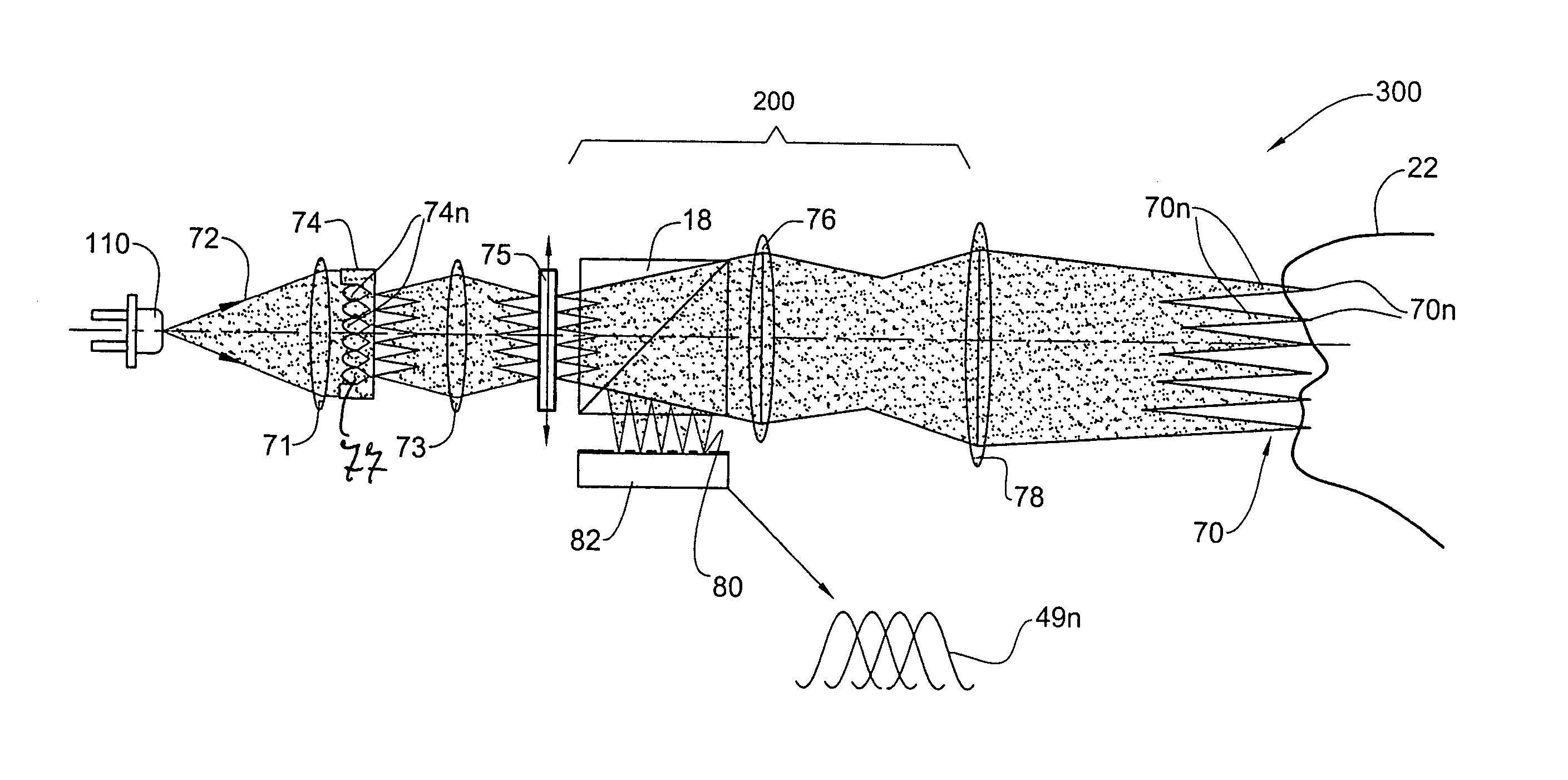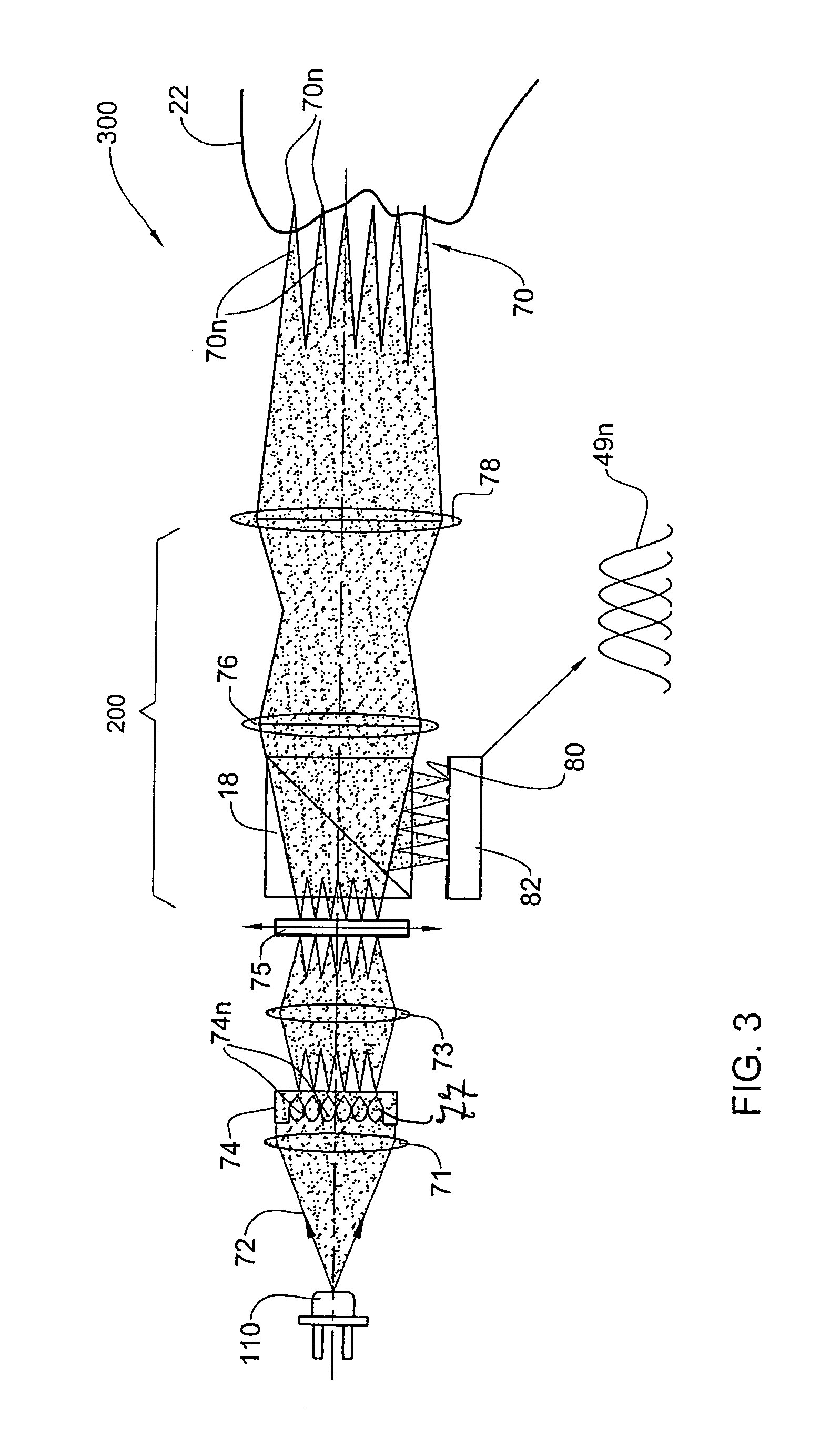Apparatus and method for providing high intensity non-coherent light and for speckle reduction
a technology of non-coherent light and optical system, applied in the direction of fixed installation, lighting and heating apparatus, instruments, etc., can solve the problem of particularly problematic specks
- Summary
- Abstract
- Description
- Claims
- Application Information
AI Technical Summary
Benefits of technology
Problems solved by technology
Method used
Image
Examples
Embodiment Construction
[0052]FIG. 1 shows a typical prior art apparatus for determining a 3-D profile, or topography, of the surface of an object / specimen, e.g. a tooth, at a desired lateral and axial resolution. The apparatus is a confocal imaging system comprising a laser 10, which constitutes a source of coherent light 12; a collimating lens 14 disposed in front of the laser for collimating the emitted light into a beam 16; a beam splitter 18 through which the collimated beam 16 passes; an optical imaging component in the form of an objective lens 20 for focusing the light beam into a beam 17 (hereinafter ‘incident light beam’), on a non-flat specimen 22 whose topography is to be determined. The above components are disposed along an optical axis A. The specimen 22 is shown in a perspective view to emphasize that it contains a depth (in Z-direction coinciding with the optical axis A) as well as a length and a width (in an X-Y plane perpendicular to the optical axis A). The incident light beam 17 that i...
PUM
 Login to View More
Login to View More Abstract
Description
Claims
Application Information
 Login to View More
Login to View More - R&D
- Intellectual Property
- Life Sciences
- Materials
- Tech Scout
- Unparalleled Data Quality
- Higher Quality Content
- 60% Fewer Hallucinations
Browse by: Latest US Patents, China's latest patents, Technical Efficacy Thesaurus, Application Domain, Technology Topic, Popular Technical Reports.
© 2025 PatSnap. All rights reserved.Legal|Privacy policy|Modern Slavery Act Transparency Statement|Sitemap|About US| Contact US: help@patsnap.com



